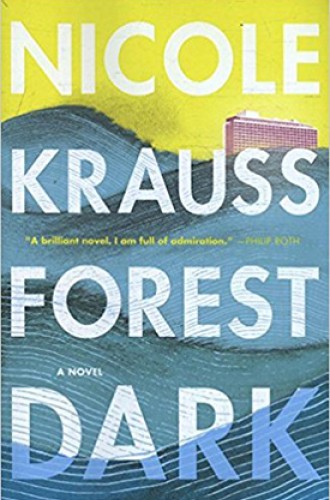Nicole Krauss’s love letter to (an imagined) Kafka
A breathtaking novel that bleeds existential urgency from every page
At the heart of this tale is a compelling fantasy: What if Franz Kafka staged his own death, assumed a new name, and emigrated to Israel, living in obscurity on a kibbutz for 15 years before dying in Tel Aviv at the ripe age of 69?
What if, indeed? The implications of this fantasy for the Kafkan universe—and by extension, for the universe Nicole Krauss creates in this breathtaking odyssey of convergence, transformation, and restoration—are startling. They upend the trope of deferral Kafka’s readers have come to associate with him and open the possibility of fulfillment in Kafka’s world. But it’s a fulfillment couched in another sort of exile—from all vestiges of self, including name, home, and family.
Across a sprawling landscape, from contemporary New York to Kafka’s Prague to Tel Aviv, Krauss charts the paths of two characters. Jules Epstein is a 68-year-old lawyer who disappears and dissociates from his life and possessions. A 39-year-old novelist named Nicole, possibly Krauss’s avatar, is in the midst of an existential crisis when she is presented with the strange assignment “to shape, through fiction, the story of Kafka’s afterlife in Israel.”
Read our latest issue or browse back issues.
Such a story is difficult to reconcile with Kafka’s ambivalence toward Zionism. Krauss, perhaps with this difficulty in mind, uses as the epigraph to the novel a quotation from Kafka that juxtaposes the anxiety of nonarrival with the hope of already having arrived:
The expulsion from Paradise is in its main significance eternal: Consequently the expulsion from Paradise is final, and life in this world irrevocable, but the eternal nature of the process makes it nevertheless possible that not only could we remain forever in Paradise, but that we are currently there in actual fact, no matter whether we know it here or not.
The epigraph’s implied charge to alter our perspective provides scaffolding for the novel. Kafka’s cat makes that charge explicit in “A Little Fable,” when he tells the mouse, “you only needed to change direction” before gobbling him up. In the epigraph, Kafka goes one step farther, challenging us to wrap our heads around the possibility that we might already be where we most want to go, that it’s just a matter of reorienting.
For Kafka, the biblical version of Abraham is a pivotal figure in this reorienting. Kafka explains that Abraham “falls victim to the following illusion: he cannot stand the uniformity of this world. Now the world is known, however, to be uncommonly various, which can be verified at any time by taking a handful of the world and looking at it closely.”
To remedy Abraham’s illusionary stance, Kafka imagines a series of hypothetical Abrahams for whom God’s call to sacrifice his beloved son has varying implications. Kafka’s final version of Abraham, “who wanted to perform the sacrifice altogether in the right way . . . but could not believe that he was the one meant, he, an ugly old man, and the dirty youngster that was his child,” is imagined as ridiculous, Don Quixote on a delusional quest, who nevertheless has been called by God even if everyone around him insists he must have heard wrong.
Krauss adapts Kafka’s strategy of revising Abraham as she conjures two characters in the midst of transformation, fracturing, and near-evaporation of their former selves. The first chapter, titled “Ayeka” (where are you?—the question God poses first to Adam, then to Noah, then finally to Abraham), responds to the call contained in Kafka’s epigraph. It’s a question of existential positioning: Where are you in relation to this charge to change direction and perspective?
Jules and Nicole wander independently through a space they perceive initially as exile. Nicole chases the wisp of a story as if it were a vehicle for tikkun (healing). Jules, in a disembodied haze, embarks on a pilgrimage from Safed to the desert. Their paths intersect in a dreamscape chapter titled “Already There,” the culmination of the penultimate chapter, “Lech Lecha” (go—referring to Genesis 12:1–17:27, which spans God’s first call to Abraham, his wanderings in the desert, the covenant of the pieces, Ishmael’s birth, and the covenant of circumcision). It’s dizzying stuff. But for Krauss’s characters, the temptation of arrival—the temptation to find the self amid others who can see that self even as it morphs and bends—is salient, palpable, visceral. Necessary. Existential urgency bleeds out of every page of this novel.
Still, Krauss is playful in her use of Kafka—in her development of him as a character in his own right and her winking references to his oeuvre strewn throughout the novel (from the cockroach who appears on the first page in Jules’s abandoned apartment to the executor of his estate, a lawyer named Schloss). The obituary she wrote for him in her 2006 novel The History of Love is one-upped here in a chapter titled “Kaddish for Kafka,” wherein Nicole relates a story about a friend who drunkenly says Kaddish over a replica of Kafka’s grave.
The contours Krauss draws between the Kafkan universe and gilgul—the mystical Jewish concept of transformation or transmigration of souls—reveal a paradox that is central to the novel. Gilgul is flux personified, metamorphosis, but it is also eternal return. In the midst of so much change, there can be a sense of the deeply familiar, of intimacy and immediate connection, of bashert (that which is meant to be). In the midst of so much fracturing, there can be wholeness. Kafka’s epigraph announces this paradox, even as it announces the elusive weightiness of the space we as readers are about to enter.
Forest Dark is a feast. Dazzling, beautiful, powerful, bewildering, consumed by things eternal: a romance of metamorphosis, creation, and nostalgia for home.






